2022
The Project
Ježibaba is a 3D puzzle game in which you can use an orbit model to manipulate the shadows casted by abstract objects to create the key characters in a story. The figure fragments can be moved and adjusted in height in the three tracks of the orbit model. In addition, both the individual orbit tracks and the entire room can be rotated to reveal a magical picture at the end.
GENERAL INFO
•Made in Unity
• Assets created in Photoshop, Procreate, Blender
•Third semester project at the HTW Berlin
•Team FloLuSveKa: Florian Czeczor, Lucy Methner,
Svenja Bette, Kai Bittighöfer
MY ROLE
•Programming Controls
•Shadow conception
•Sound, Shader and Asset Implementation
•Scultping


Ježibaba invites you to immerse yourself in a fascinating world of fairy tales and myths. The witch Baba Yaga und the sorcerer Koschei communicate their story through spoken dialogue, which you can listen to between the puzzle segments. Both sound and color world take you into a dark and mysterious world. A minimal interface that allows the focus in visual and auditory influences promotes immersion. Fantastic shadow-figure puzzles are the main mechanics of the game. Being able to play through the progression of the story by matching the characters together brings the story to life, letting the player become part of the plot and stimulating their imagination.

Making progress prompts the observing characters Koschei and Baba Yaga to comment on your actions.

Taking a closer look and discovering progress lets another piece of the final image appear.

Listen to the story of how Koschei was tricked by Baba Yaga.

Feel free to let your imagination run wild. What do you see?
This was the first project we were able to work on as a team without home office. The dynamic and workflow was completely different and enabled us to be a lot more focused on this project.
Progress
Initially we suffered a major setback by having to scrap our entire first concept. We needed a justification why it had to be a 3D game, which our first idea did not provide. Finally we thought of a system, in which a specific shadow has to be cast by manipulation a solid objects. Ideally in doing so, players would follow a specific story and complete key scenes of it. Based on that principle, we continued our conception.
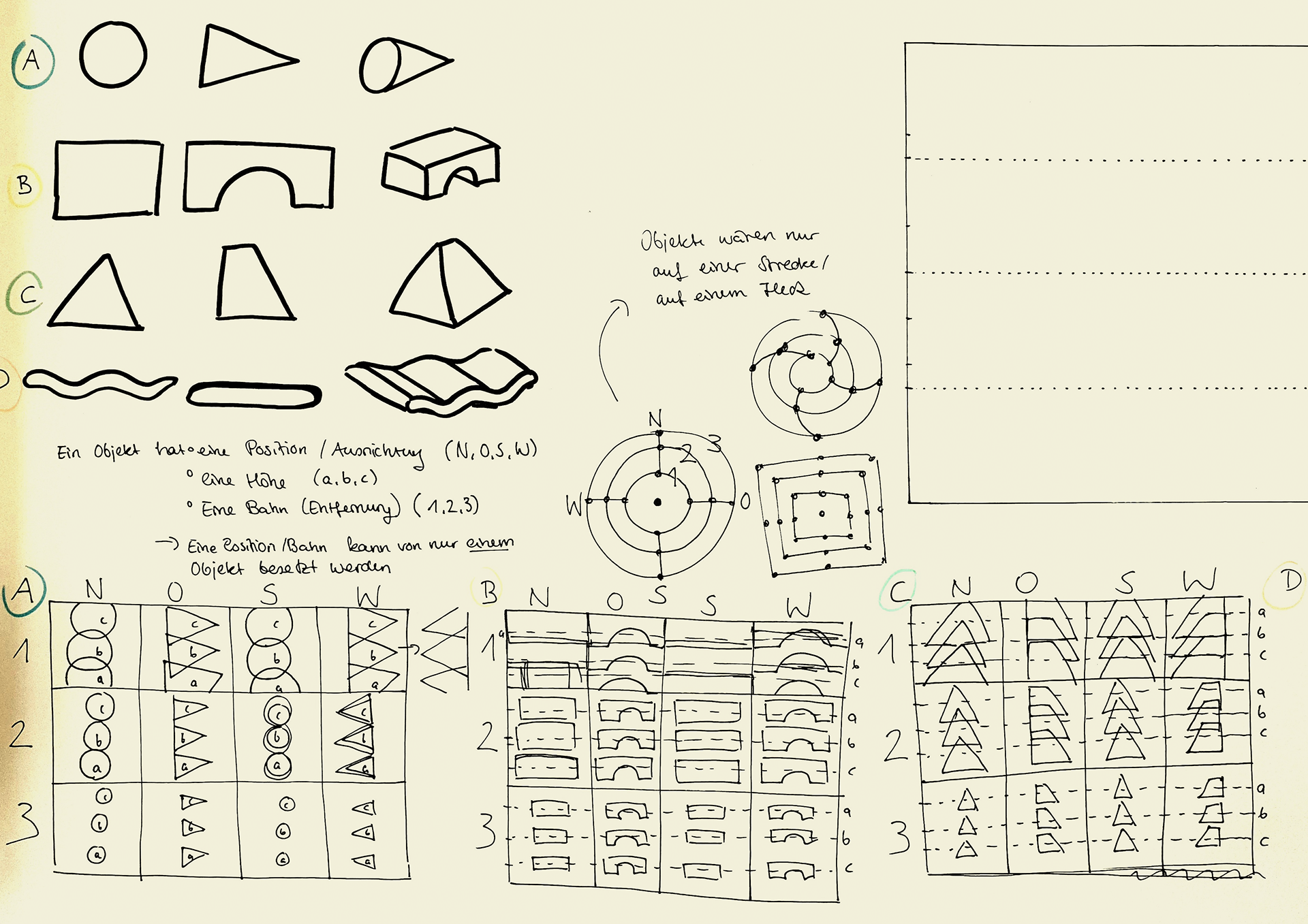
To help us find possible shapes and images, I created a "shape catalogue".

It was supposed to let us test out compositions and refer to them in codes.

These first sketches already showcase the orbit model, that ended up in our final game.
One point of contention was the complexity of the shadow figures. Our first instinct was keeping it simple and abstract, fearing having very specific and non abstract shapes would make the game too easy. However, relying on oversimplified and abstract shapes could create too many possible solutions to the riddles. We did not want to frustrate our players by not rewarding a possible answer, that could be deemed correct. Ultimately, we decided to work with illustrative shapes, with clear results.
Unlike any other project, we knew very early on, what we wanted our final game to be and what was going to happen within it. These early concepts of the orbit mechanics are still present in the final game.
Our idea was clear, but how to achieve it was not clear yet.



To explore multiple possibilities of managing the game, each of us produced their own prototype. Mine Worked with a mini-map, that was supposed to keep players on track, where the objects currently are. The orbit rings could be rotated with a slider and the height of an object could be adjusted if it hovered above a selection zone.
These controls soon turned out to be too unintuitive, even after changing the selection to be done with the mini-map. We gave the controls several overhauls, until we were satisfied. We tried to simplify them as much as possible and therefore keep the UI as clean as possible. This gave our shadows even more space.
The final controls are much more intuitive.


Artstyle
After mechanics were set, we chose our setting: the slavic folktales of Baba Yaga. There we also found the character Koschei and their shared past. After summarizing the tale, we pinpointed several key images, that could be recreated in game. After all, having impactful silhouettes would be fundamental for the game feel. To keep the spirit of the myths, we took inspiration from the illustrator Iwan Jakowlewitsch Bilibin.
The figures we chose were Koschei, the Hut on Chickenlegs, Baba Yaga and Koschei in the shape of a hare.

Especially Koschei riding on his horse is a very dynamic silhouette.


Baba Yaga is known to travel with several tools, which I tried to implement in these silhouettes.
We created some fake screenshots to get a better idea of the mood we want to capture. Especially the material of he shapes and orbit model and lighting was important for us to figure out. In what space does our game even take place? In our mind, the players encountered the orbit model in a secret room within Baba Yaga's hut, that contained a little world within itself.

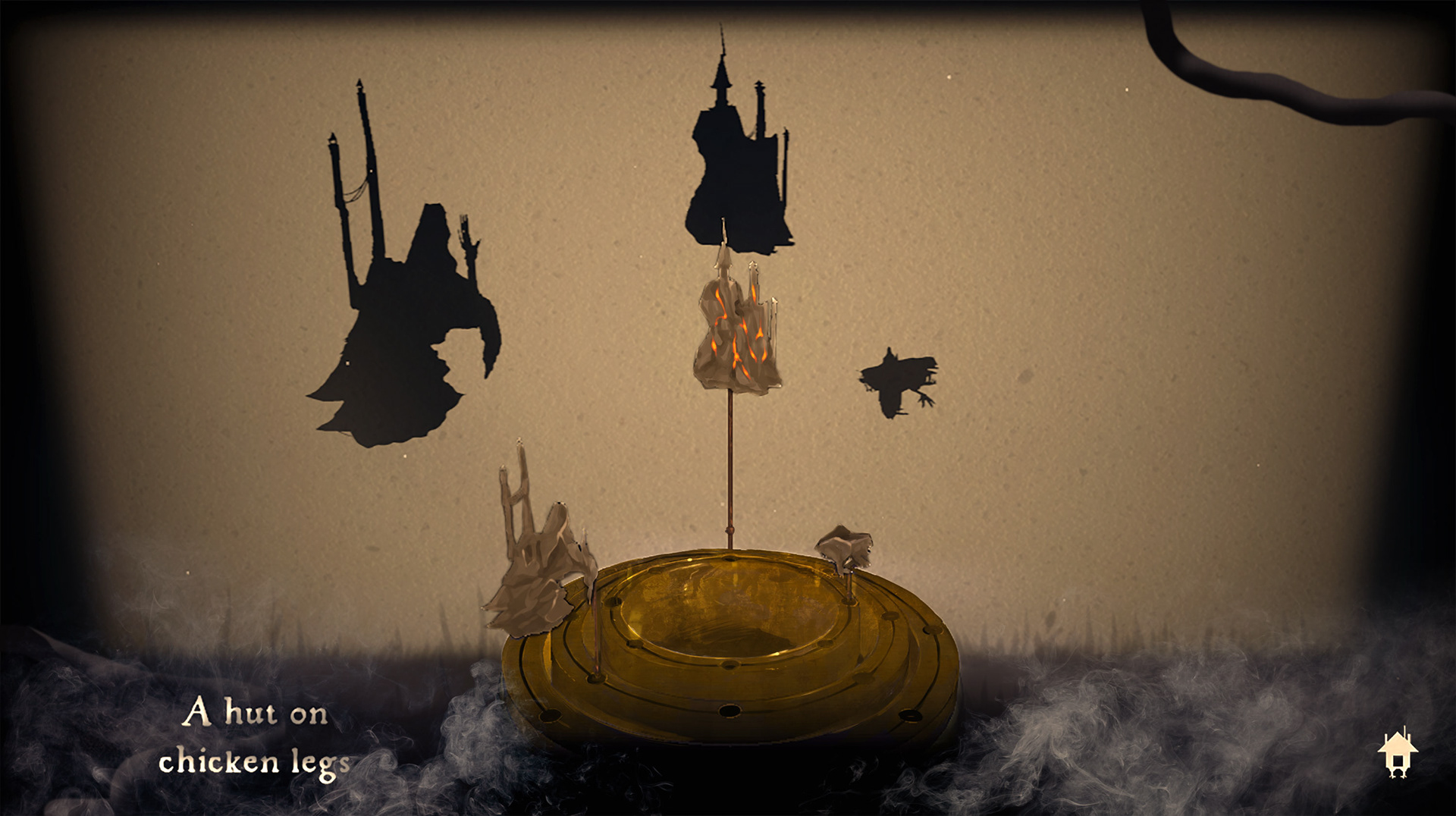
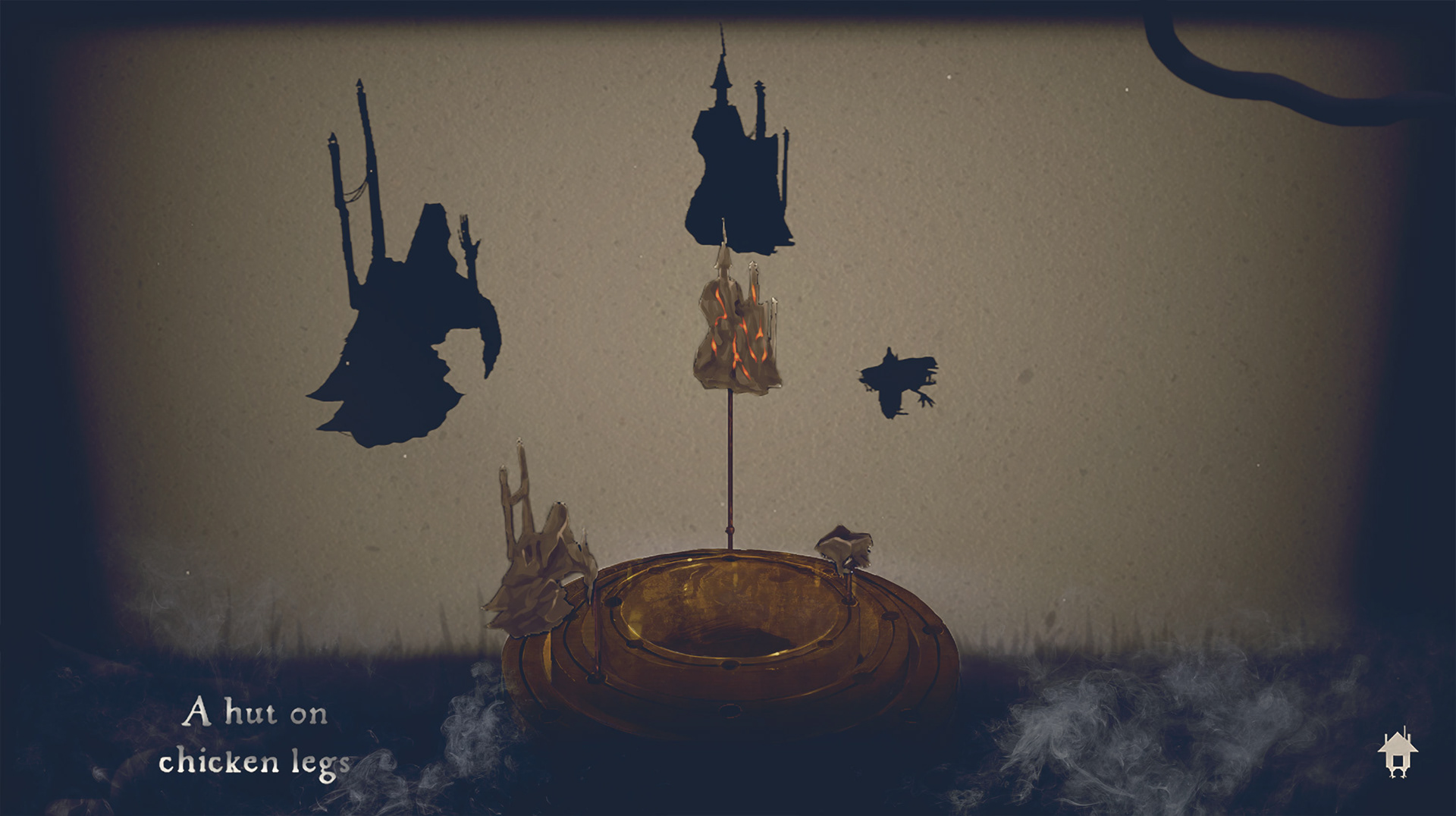








First concepts for cursors


We needed further rewards for completing a puzzle, a wow-moment if you will. We decided to create a background, that would transform the completed shadow figure into a full illustration, revealing itself in layers. Players are able to zoom into the screen and check, if their progress prompts the appearance or disappearance of a piece of background.

Baba Yaga consumed in anger

The hare skipping through the mountain side

The Hut roaming the forrest

Koschei riding on his horse
After we all sketched out some sceneries for the figures, we divided them into three separate layers, which would appear every time progress has been made or disappear, if a correct placement is changed.
We needed a more dynamic pose for the hare, as its detail fell short compared to the other silhouettes. Therefore I redesigned it and tried to make the Hare's shape look as rough as possible – so it would look like it could actually contain the spirit of an immortal wizard.
Shapes
The most important and simultaneously challenging cast was to divide and reassemble the shapes, so they could form two different characters. After some deliberation, this became my task. Florian provided 3D objects of our base figures, which were cut into three and combined with the shape fragments of the second shape that's supposed to be hidden within the object. To hide the shapes within each other, I needed to bend, reshape, enlarge or shrink certain areas of the fragments.


What followed was a very tedious back and fourth between Unity and Blender, as their lighting system works differently and therefore yielded different results in shadow figures.
The final shadow figures varied slightly from our original designs. Fortunately, they turned out even more interesting in some cases.




To add more life and dimension into the room I created some roots that we placed in the scene.



The final objects were not as detailed as we envisioned but what we were able to do within the time constraint. On the other hand – had we been able to fully realize our initial idea, the puzzles would have been even more difficult to solve.The textures were done on Blender to make the shapes look like mossy stone – ancient pieces of unknown origin.
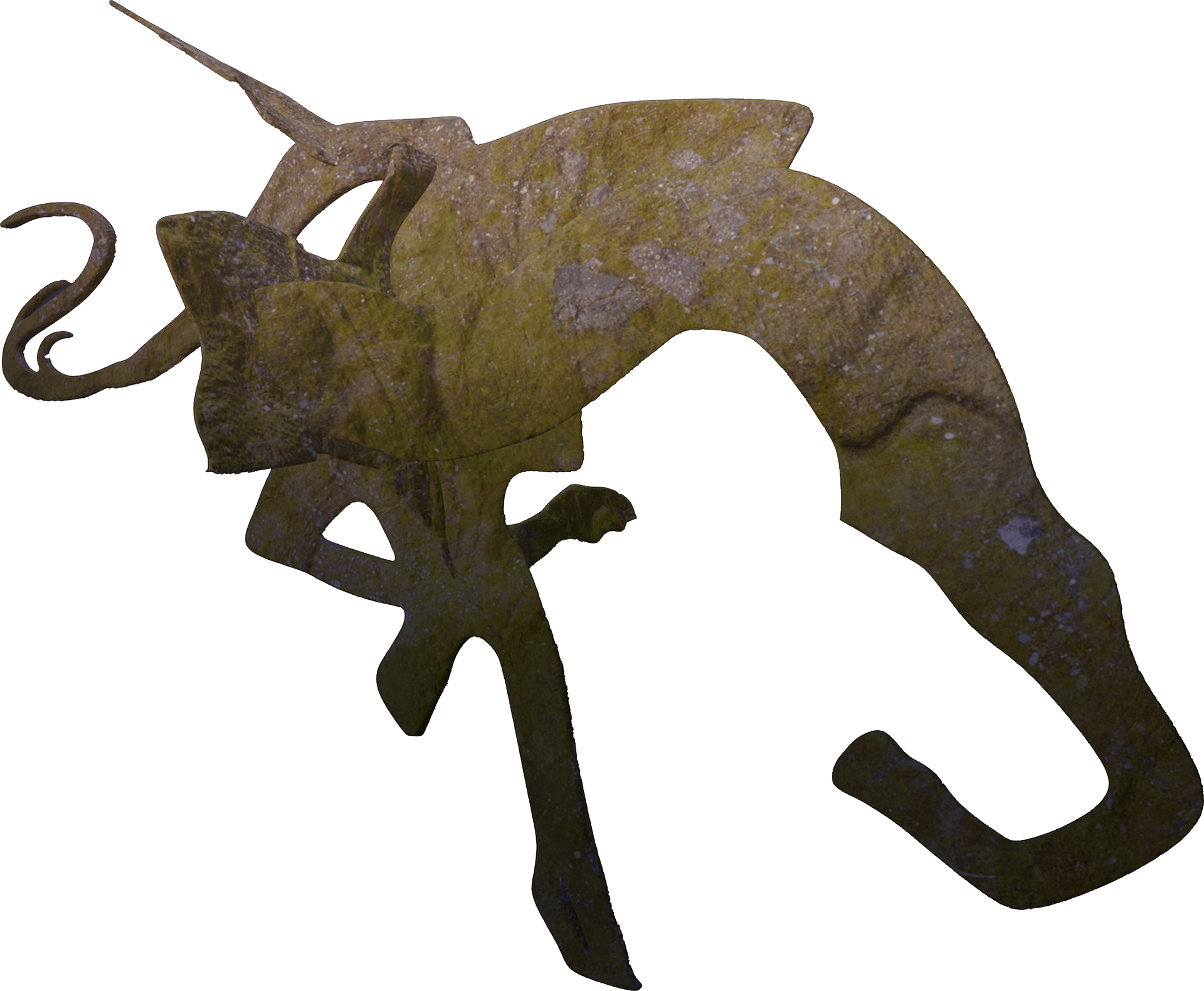


Below are the completed shadows including backdrop. Each riddle has its own ambient volume to make it fit the story better.

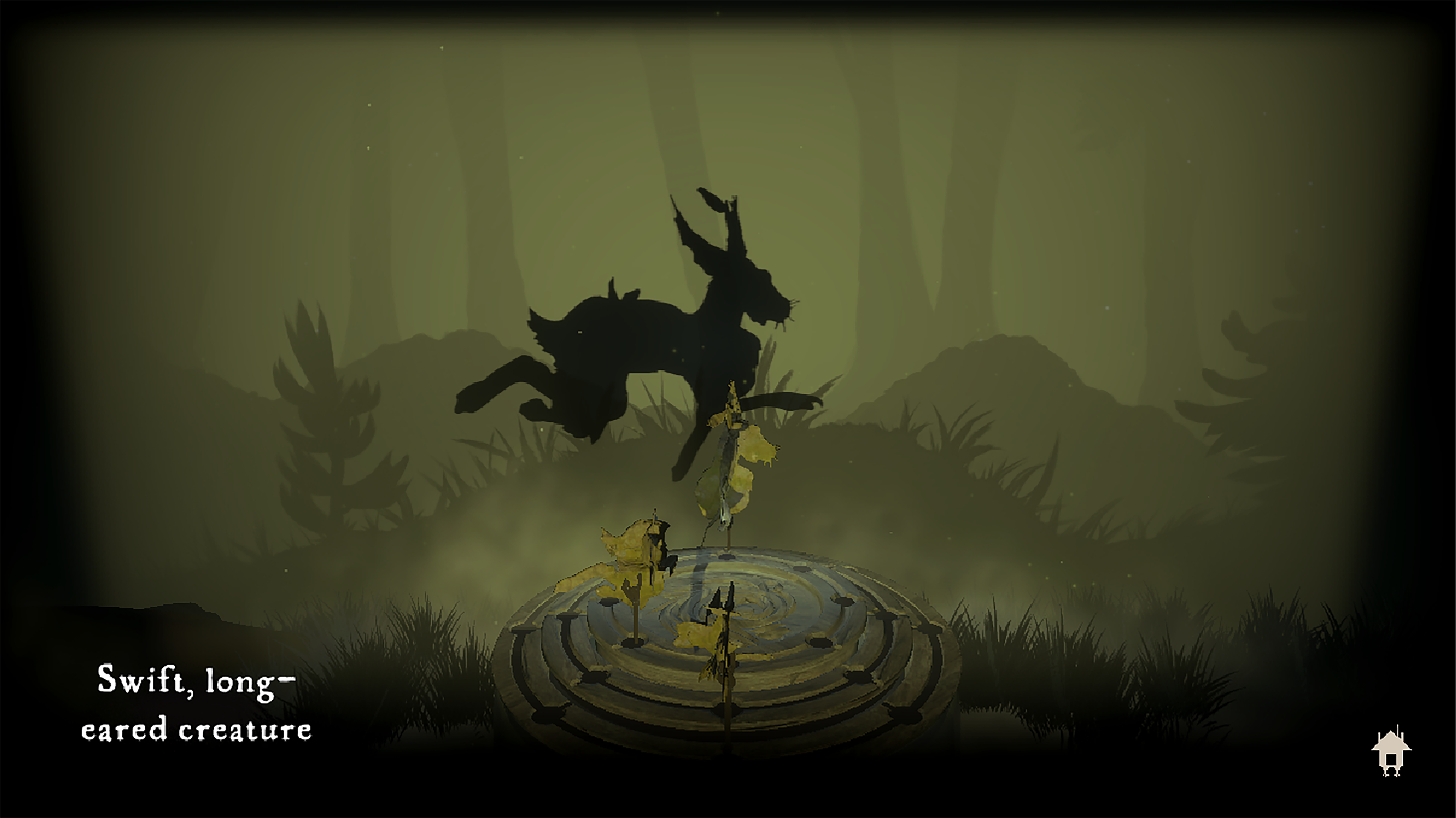


This chart showcases how to solve each of the riddles.
While the main goal of the game is to complete the shadow figures, we also want to encourage our players to play around with the shapes and explore the possibilities. It is reminiscent of looking into the sky and guessing what clouds look like. Taking screenshots could also be used as a creative practice, like painting in what the silhouette shows.

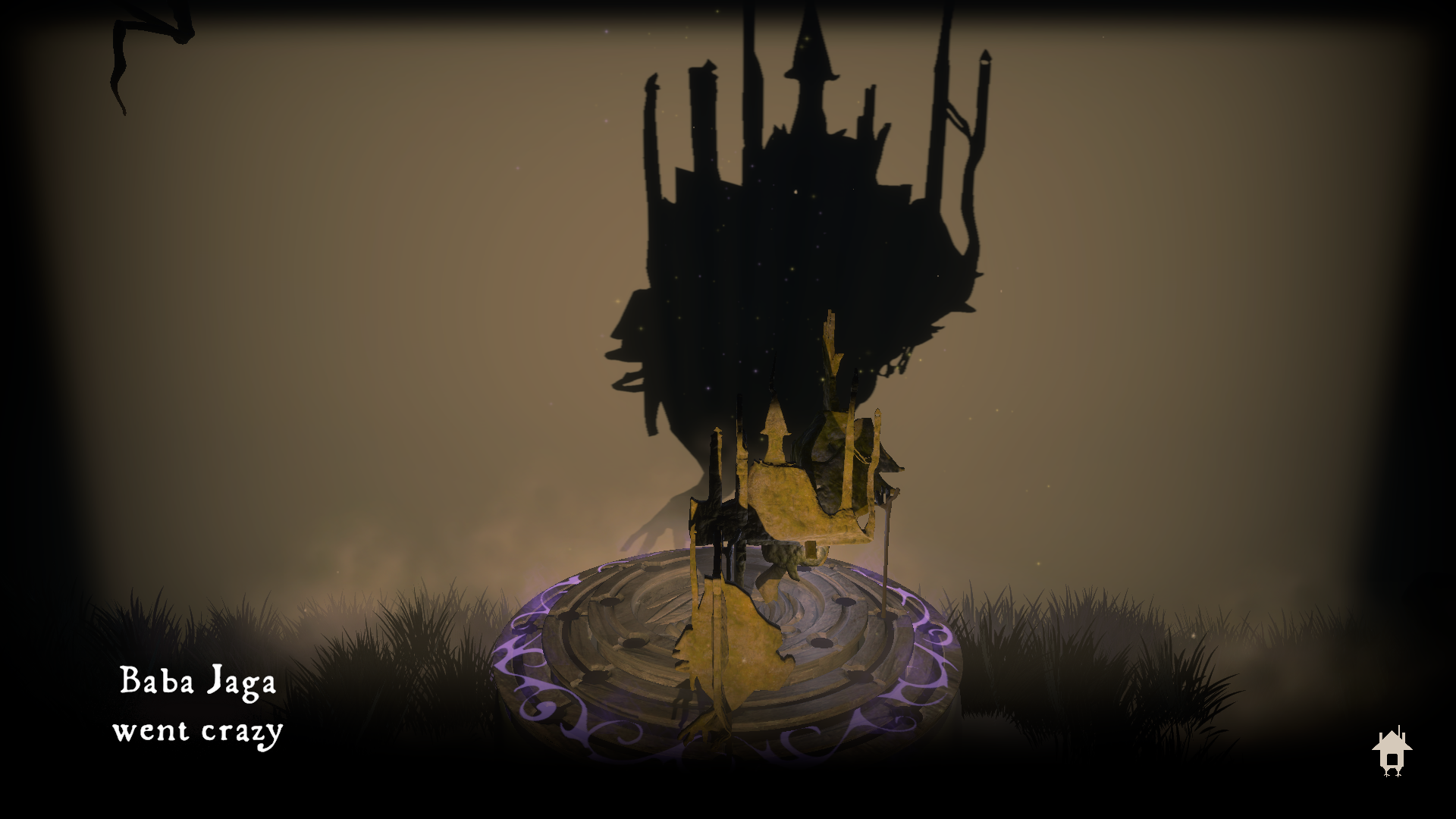
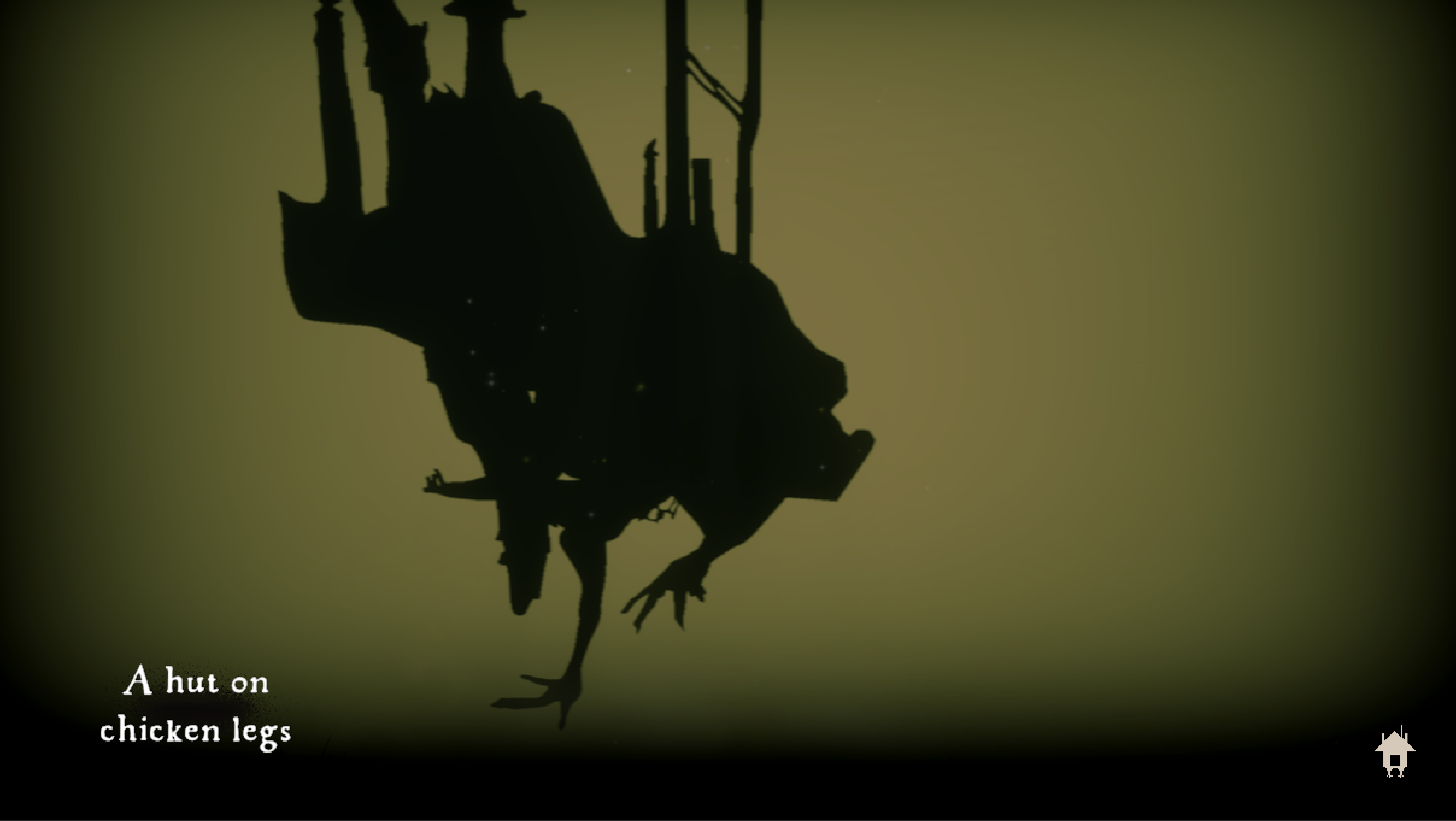


To give our game the final touch, we recorded the voice-lines for Koschei and Baba Yaga. They comment on the player actions and the progress – or the lack thereof.
Some of Koshei's voice-lines.
Conclusion
We are extremely proud of what we created. After a fumble in the beginning we were very focussed on our end goal and knew what we wanted. During the production we often faced doubt by people not fully understanding what we were going for, but we did not let that affect us, because we were confident in our vision. The further we got in the process, the more enthusiastic other people became for the project, as they understood what we were going for. In the end we created a unique experience and were told by one of our coaches we would have created the best shadow figures of the past 12 years.
Ultimately we learned first and foremost how to effectively communicate and optimize our workflow. Each of us were able to explore new skills and had a big part in shaping the final product. I am very thankful for my fellow team members, because we could rely on each other and created a very pleasant work environment.
The team: Kai Bittighöfer, Florian Czeczor, Lucy Methner, Svenja Bette
We were able to finally present our game at the online HiveFive event.
